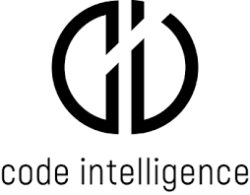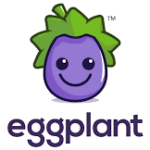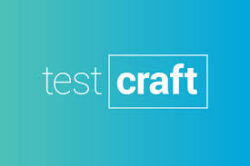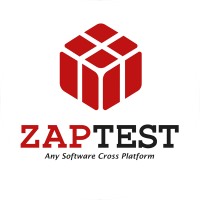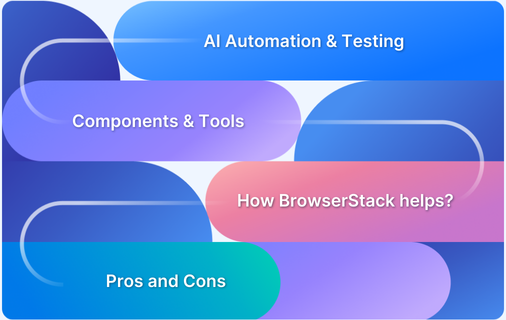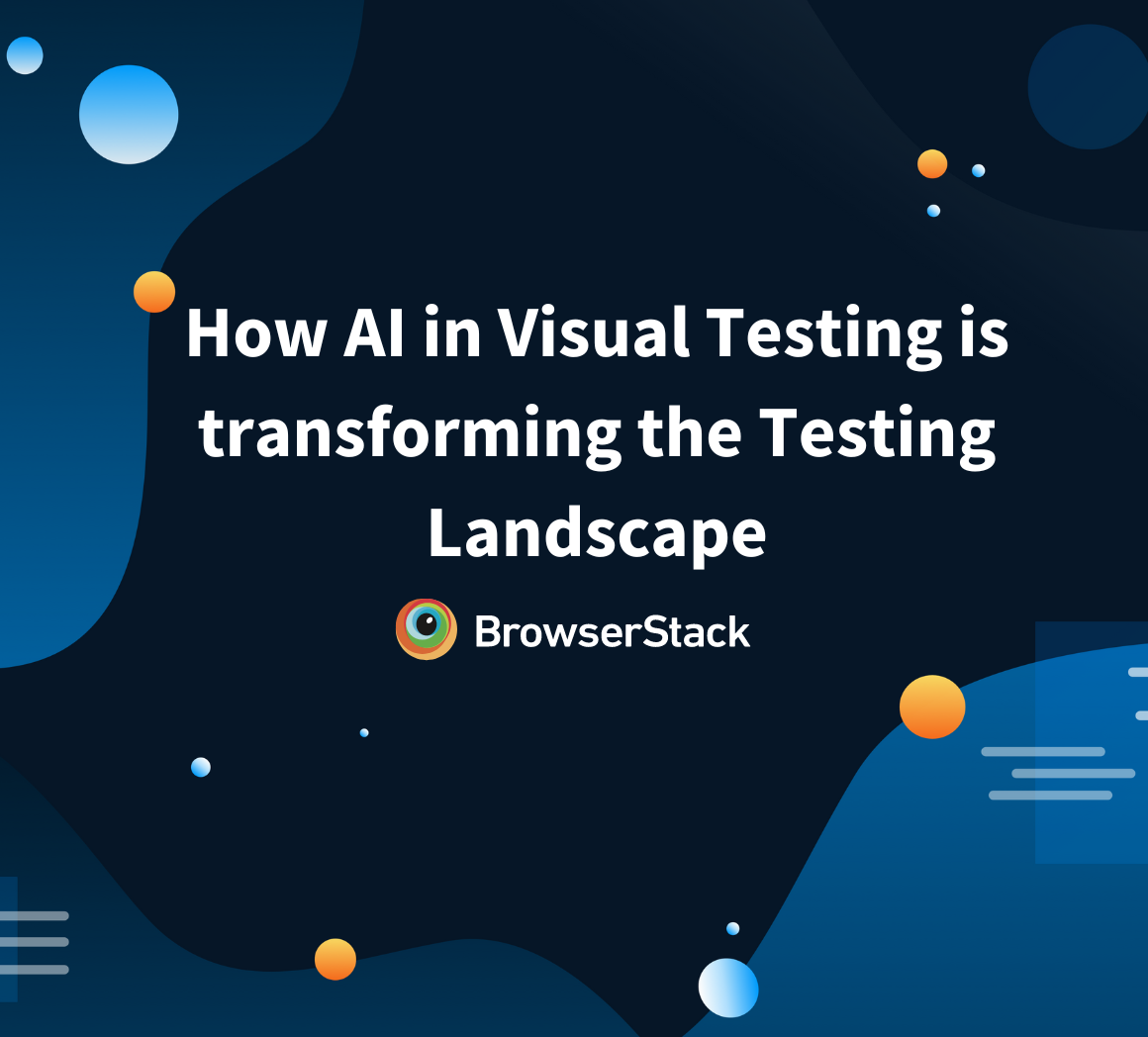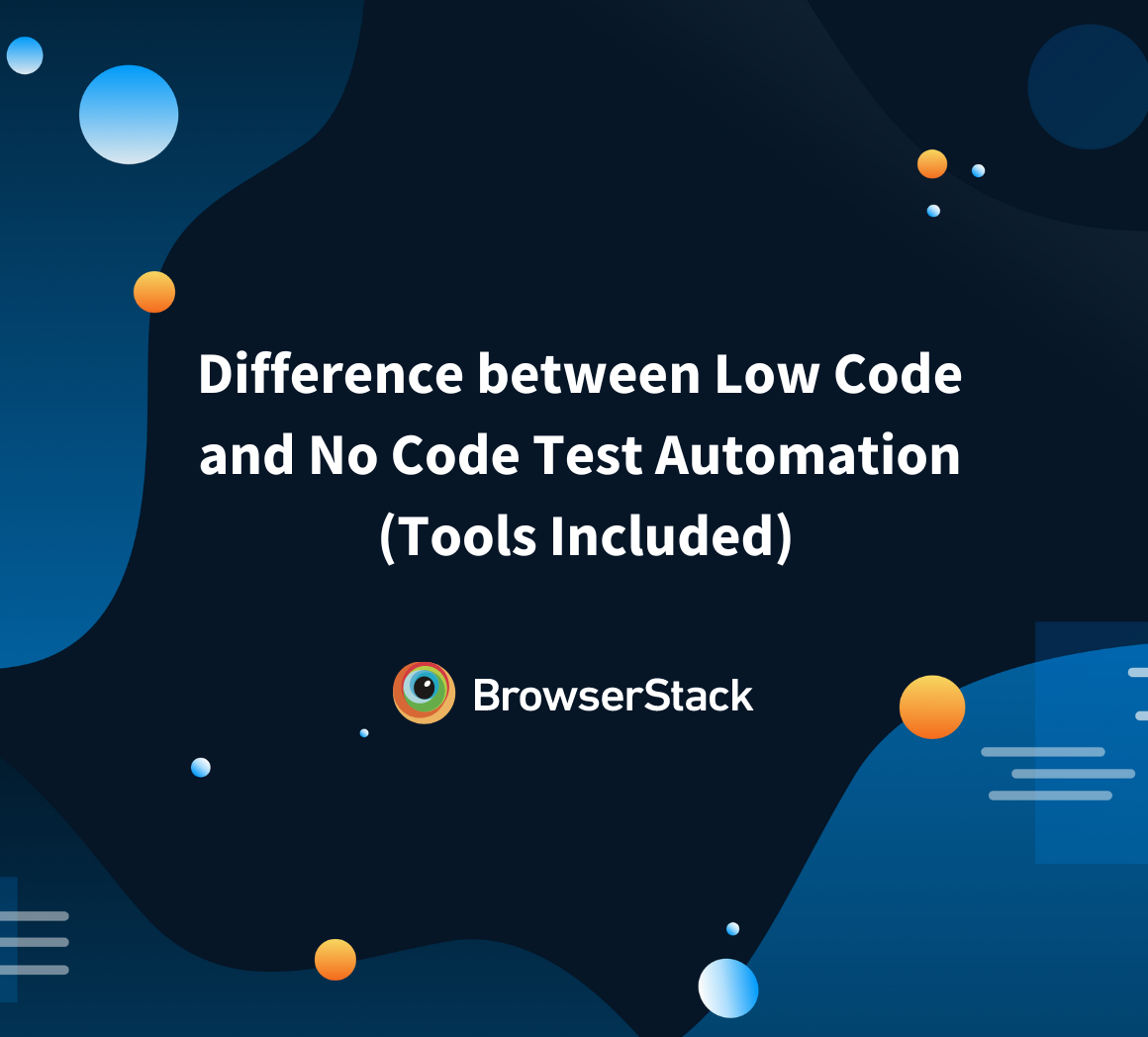Top 14 AI Testing Tools
By Shweta Jain, Community Contributor - November 8, 2024
AI testing uses Artificial Intelligence to automate and improve software testing processes. AI testing tools help generate test cases, identify defects, ensure UI consistency, and predict failures. These also improve test efficiency and coverage while reducing manual effort.
This article explores the top 14 AI testing tools, their key features, and their pros and cons.
Role of AI in Testing
AI is transforming software testing by increasing speed and ensuring accuracy in various ways, empowering organizations to achieve more efficient and effective outcomes. Below are some scenarios :
- Low Code Automation Testing: AI tools let users create automated tests with just a few lines of code. It makes it quicker to get tests up and running and keep them updated.
- Test Management: AI algorithms help prioritize tests based on potential risks. This could improve how teams manage their testing efforts.
- Visual Testing: AI-powered visual testing tools quickly spot differences in user interfaces, reducing the need for manual checks.
- Test Observability: AI tools analyze test results in real time, assisting teams in identifying and fixing issues more efficiently and quickly.
- Predictive Analytics: AI utilizes historical data to predict potential defects and failures, enabling proactive testing strategies.
- Natural Language Processing (NLP): AI tools understand requirements, generate test cases from user stories, and establish collaboration between technical and non-technical teams.
- Self-Healing Tests: AI tools automatically update and adjust test scripts to changes in the application, minimizing maintenance efforts and ensuring continuous integration.
Read More: AI Automation and Testing
What is an AI Testing Tool?
AI testing tools are modern-day applications that utilize artificial intelligence to enhance and automate various aspects of the testing process.
These tools enable testers to:
- Efficiently generate test cases
- Identify potential bugs
- Optimize test coverage
- Ensure UI consistency
- Predict areas of risk in software applications
- Speed up testing cycles
- Reduce manual testing efforts
Benefits of using AI Testing Tools
AI testing tools offer several benefits that exponentially enhance the overall quality and efficiency of software development and testing processes. Below is a concise, technical summary of all the advantages of AI testing tools :
- Automation: AI tools can automate and streamline repetitive tasks, enhancing efficiency.
- Speed: AI accelerates testing cycles by rapidly automating test cases allowing for quicker releases.
- Precision: AI tools improve Accuracy and minimize human error in testing, providing more reliable results and better identification of issues.
- Enhanced Test Coverage: AI tools can analyze large volumes of data to identify edge cases and provide extensive coverage.
- Predictive Analytics: Anticipates failures using historical data, helping teams to proactively address issues before they arise.
- Adaptive Learning: Improves test strategies based on past test results and adapting to changes in the application.
- Cost Efficiency: There may be an initial investment in AI tools but faster issue detection can lead to long-term cost savings.
- CI/CD Integration: Seamlessly integrates into existing CI/CD workflows.
- Real-time Insights: Provides real-time feedback during the testing process, enabling quicker decision-making.
- Continuous Testing: Supports continuous testing in agile and DevOps environments, ensuring quality throughout the development lifecycle.
Read More: Why No Code is the Future of Testing
Top 14 AI Testing Tools
Here is a list of the top 14 AI Testing tools.
1. BrowserStack
BrowserStack provides a suite of testing tools with AI-driven features. These are designed to simplify and enhance automation and test management for agile teams.
Here’s a quick overview of some key products:
Low Code Automation
BrowserStack’s Low Code Automation tool harnesses AI-powered features to simplify test maintenance and reduce manual intervention, making automation accessible for all skill levels.
Key Features:
- Self-Healing Tests: Uses AI-driven self-healing to adapt tests automatically when UI changes occur, reducing failures and minimizing maintenance efforts.
- Smart Locators: Utilizes AI to identify and adjust locators automatically, reducing test flakiness and maintenance as the application evolves.
- Natural Language Prompts: Allows users to define and execute test steps using simple natural language prompts, eliminating the need for complex coding in test creation.
- AI-Generated Test Data: Automatically generates fresh data for fields in each test run, avoiding data cleanup and ensuring consistent, repeatable tests.
Percy and App Percy
Percy and App Percy bring AI-powered visual testing to web and mobile applications, allowing teams to catch visual bugs with precision while minimizing irrelevant alerts.
Key Features:
- Reduced Noise and Flakiness: Percy highlights only the changes most critical to users, allowing teams to focus on impactful differences and ignore minor variations.
- Page Shift Detection: App Percy pinpoints the exact pixels causing page shifts, avoiding full-page diffs and making it easier to identify and resolve layout issues.
- Handling Anti-Aliasing Noise: The Percy Visual Engine uses computer vision to accurately render each pixel, eliminating false positives caused by anti-aliasing
Test Management
BrowserStack’s Test Management tool leverages AI to optimize test case creation and management, making it easier for teams to track and enhance their testing process.
Key Features:
- AI-Powered Test Case Creation: Generate new test cases with AI-driven suggestions and enhance existing ones for better coverage and efficiency.
- AI-Powered Jira App with Two-Way Binding: Syncs seamlessly with Jira, allowing teams to view and manage test cases and test runs in both Test Management and Jira. The AI-powered Jira integration helps streamline test creation and updates, ensuring synchronized progress across platforms.
Test Observability
BrowserStack’s Test Observability tool provides deep insights into test performance and stability, powered by AI to help teams quickly identify and resolve issues, improving the overall test efficiency.
Key Features:
- Intelligent Failure Analysis: Leverages AI to analyze and categorize test failures, helping teams pinpoint root causes faster and reduce debugging time.
- Real-Time Alerts and Insights: Delivers AI-driven alerts for critical test issues, along with actionable insights, so teams can proactively address potential bottlenecks and improve test stability.
- Smart Test Retries: Automatically reruns flaky tests with minimal intervention, reducing false positives and allowing teams to focus on genuine issues.
Verdict
BrowserStack’s AI-driven platform simplifies and strengthens the testing process with tools like Low Code Automation for easy, code-light test creation and Test Observability for in-depth analysis.
Percy & App Percy provides precise visual testing, while Test Management enables smooth organization and Jira integration. With self-healing tests, natural language prompts, and intelligent insights, BrowserStack accelerates test cycles and boosts reliability, making it ideal for agile teams.
2. Code Intelligence
Code Intelligence is a tool designed to enhance software testing by automating the generation of test cases based on the source code.
It leverages AI to identify potential vulnerabilities and ensure comprehensive coverage.
Key Features:
- Automated test case generation
- Code vulnerability scanning
- Integration with CI/CD pipelines
- Real-time reporting and analytics
Pros:
- Reduces manual testing effort
- Increases test coverage significantly
- Identifies security vulnerabilities early
Cons:
- Requires an initial setup and configuration
- May generate redundant or unnecessary tests
Verdict: Code Intelligence offers robust test automation and vulnerability detection. It enhances coverage and security, though initial setup and occasional redundant tests may require attention.
Read More: Best Codeless Test Automation Tools
3. EggPlant
Eggplant is a comprehensive testing tool focused on user experience and functional testing across various platforms. It uses image recognition for UI testing and supports automation across web, mobile, and desktop applications.
Key Features:
- Image-based testing
- Multi-device support
- Integration with CI/CD and DevOps tools
- Extensive reporting and analytics
Pros:
- High accuracy in UI testing through image recognition
- Works with many different platforms and devices
- Strong focus on user experience
Cons:
- It may require significant setup time
- Performance can vary based on application complexity
- Licensing costs can be significantly higher for larger teams
Verdict: EggPlant’s image-based testing is highly effective for cross-platform functionality. However, setup can be time-consuming, and costs may add up for larger teams.
Read More: Low Code vs No Code Test Automation
4. TestCraft
TestCraft is a codeless test automation platform that lets users create and manage tests through a visual interface, making it easy for both technical and non-technical users to use. It facilitates rapid test creation and management without the need for programming.
Key Features:
- Codeless test creation
- Built-in test analytics
- Integration with CI/CD tools
- Reusable test components
Pros:
- Fast test creation with no coding required
- Strong reporting capabilities
- Easy to adapt as application changes
Cons:
- May lack flexibility for complex testing scenarios
- Performance can degrade with large test suites
- The learning curve for full feature utilization
Verdict: TestCraft excels in rapid, codeless test creation. It’s ideal for teams with varying technical skills, though it may struggle with complex scenarios and large test suites.
Read More: Comprehensive Guide to Low Code Development
5. Watir
Watir (Web Application Testing in Ruby) is an open-source tool for automating web application testing. It uses Ruby to drive browsers and supports various web technologies.
Key Features:
- Simple Ruby syntax for test scripts
- Supports multiple browsers
- Integration with CI tools
- Community-driven with extensive documentation
Pros:
- Open-source and free-to-use
- Flexible and powerful for Ruby developers
- Active community for support and plugins
Cons:
- Requires Ruby programming knowledge
- It can be less user-friendly for non-developers
- Limited support for non-web applications
Verdict: Watir is a powerful choice for Ruby developers needing flexibility in web testing. It requires programming knowledge and lacks support for non-web applications.
6. Parasoft
Parasoft provides a suite of automated testing tools that focus on quality and compliance across various stages of the software development lifecycle. It supports multiple programming languages and helps maintain industry compliance.
Key Features:
- Static code analysis
- API testing and virtualization
- Continuous testing integration
- Detailed reporting and compliance checks
Pros:
- Comprehensive coverage for various testing needs
- Supports multiple programming languages
- Helps maintain compliance with industry standards
Cons:
- Costlier for small organizations
- It may require integration efforts with existing tools
Verdict: Parasoft is excellent for teams needing comprehensive testing and compliance. However, it may be costly for smaller teams and require integration efforts.
Read More: Top AI Testing & Debugging Tools
7. Test.ai
Test.ai uses AI to automate the creation and execution of tests for mobile and web applications. It focuses on user-centric testing and adapts seamlessly to application changes, ensuring high accuracy in detecting UI issues.
Key Features:
- AI-generated test cases
- Visual testing capabilities
- Integration with CI/CD tools
- Continuous learning from application changes
Pros:
- Reduces manual testing efforts significantly
- Adapts to application changes over time
- High accuracy in detecting UI issues
Cons:
- Initial setup may require technical expertise
- Performance depends on the complexity of the code.
- Cost considerations for smaller teams
Verdict: Test.ai provides user-centric testing with high adaptability, significantly reducing manual effort. Setup may need technical expertise, and performance can vary with complexity.
8. Aqua ALM
Aqua ALM streamlines testing and project management throughout the application lifecycle, ensuring quality and facilitating team collaboration. It supports various testing methodologies and is designed to handle comprehensive test management.
Key Features:
- End-to-end test management
- Requirement tracking
- Integration with CI/CD tools
- Reporting and analytics features
Pros:
- Comprehensive management of testing activities
- Facilitates collaboration among teams
- Supports various testing methodologies
Cons:
- It can be complex to set up initially
- It may require training for effective use
- Pricing may be a hurdle for some organizations
Verdict: Aqua ALM streamlines testing and team collaboration with broad methodology support. Initial setup and training may be required, especially for smaller teams.
9. Sealights
Sealights offers intelligent test optimization and analytics, focusing on maximizing test coverage while minimizing redundancy. It integrates well with existing workflows and provides actionable insights to enhance testing efficiency.
Read More: Key Test Optimization Techniques
Key Features:
- Test coverage analysis
- Automated test prioritization
- Integration with CI/CD pipelines
- Detailed reporting and insights
Pros:
- Optimizes testing efforts for better efficiency
- Provides actionable insights to improve quality
- Integrates well with existing workflows
Cons:
- Initial setup can be time-consuming
- May require customization for specific needs
- Pricing considerations for smaller teams can be overwhelming
Verdict: Sealights optimizes test efforts with actionable insights and easy integration. Initial setup can be time-intensive and may need customization for specific needs.
10. Vize.ai
Vize.ai automates the testing of image-based applications with its visual recognition API, allowing teams to validate visual elements efficiently. It is highly effective for visual testing and reduces manual testing efforts.
Key Features:
- Image recognition capabilities
- API integration for seamless workflows
- Supports various image formats
- Detailed reporting and analytics
Pros:
- Highly effective for visual testing
- Reduces manual testing efforts
- Easy integration with existing systems
Cons:
- Limited to image-based applications
- It may require training for effective use
- Performance can vary based on image complexity
Verdict: Vize.ai is ideal for efficient visual testing, significantly reducing manual effort in image-based applications. However, it’s limited to visual elements and may require training for effective use.
Read More: Top Open Source AI Testing Tools
11. TestCafe Studio
TestCafe Studio offers a streamlined testing environment for web applications, requiring no setup and running on any modern browser. It supports all major browsers and devices, providing built-in debugging tools for efficient test management.
Key Features:
- No setup is required; runs on any modern browser
- Supports all major browsers and devices
- Built-in debugging tools
- Continuous integration support
Pros:
- User-friendly interface for test creation
- No dependencies on WebDriver
- Strong support for modern web technologies
Cons:
- Limited capabilities for non-web applications
- Can become complex with larger test suites
- Performance can be affected by browser settings
Verdict: TestCafe Studio provides a user-friendly, dependency-free web testing environment. Its capabilities for non-web applications and larger suites are somewhat limited.
12. ZapTest
ZapTest is a versatile, integrated test automation platform designed for functional and performance testing across web, mobile, and desktop applications, offering scriptless automation for rapid feedback.
ZAPTEST’s use of artificial intelligence, computer vision, and automation technologies helps organizations automate repetitive tasks, enhance efficiency, and minimize the risk of human error in testing and other business processes.
Key Features:
- Scriptless test automation
- Multi-platform support
- Real-time monitoring and reporting
- Continuous testing capabilities
Pros:
- The interface is user-friendly and simple.
- Supports various platforms and technologies
- Enables fast feedback for development teams
Cons:
- It may require technical knowledge for advanced features
- Performance can vary with extensive test suites
Verdict: ZapTest’s scriptless automation supports rapid feedback across platforms. Advanced features may require technical skills, and performance can vary with complex tests.
13. Healium
Healium is a testing tool that leverages AI to enhance software reliability through real-time monitoring and automated healing of test scripts, minimizing disruptions from application changes.
Key Features:
- Automated Self-Healing: Detects and adapts to UI changes in real-time, reducing test maintenance.
- Root Cause Analysis: Quickly identifies the root cause of test failures, helping teams address issues faster.
- Cross-Browser Testing: Ensures stable performance across various browsers, enhancing test coverage.
- Integration with CI/CD: Seamlessly integrates into CI/CD pipelines for continuous testing.
Pros:
- Reduces manual intervention with self-healing tests.
- Enhances stability across changing application environments.
- Minimizes test flakiness, reducing debugging time.
Cons:
- Initial configuration may require setup time.
- May not fully adapt to highly dynamic UI changes.
Verdict: Ideal for teams looking to reduce maintenance with self-healing capabilities, though it may require initial setup and may not adapt fully to dynamic UIs.
14. Sofy.ai
Sofy.ai is an AI-driven mobile testing platform that focuses on improving app quality through automated test case creation and real-device testing.
Key Features:
- Automated Test Case Generation: Uses AI to create test cases based on app interactions, reducing manual effort.
- Real Device Testing: Provides access to a variety of real devices for accurate testing results.
- Test Orchestration: Automates test scheduling and execution, ensuring consistent testing.
- Performance Insights: Offers detailed performance analytics, helping teams optimize app quality.
Pros:
- Saves time with automated test creation.
- Increases accuracy with real-device testing.
- Simplifies test scheduling and reporting.
Cons:
- Limited customization for complex test cases.
- Real-device access may be limited depending on plan.
Verdict: A great choice for mobile testing with automated test generation and real-device access, though customization for complex tests could be limited.
What factors to consider when choosing an AI Testing Tool?
When choosing an AI testing tool, here are essential factors to consider:
- Compatibility: Select a tool that integrates smoothly with your existing CI/CD pipeline, languages, and frameworks.
- Automation Capabilities: Look for tools that assess automation coverage across UI, API, and performance testing, as these can greatly benefit the software development lifecycle (SDLC).
- Integration: Ensure the tool can easily integrate with your existing development tools and workflows.
- Test Coverage: Look for tools that offer extensive test coverage options, including functional, performance, and visual testing areas.
- User-Friendliness: The interface should be intuitive, allowing you and your team to operate it without complications.
- Features: Assess the tool’s features like automated test generation, bug detection, visual testing, and predictive analytics to match your project requirements.
- Technology Compatibility: Make sure the tool supports the technologies used in your projects, including web, mobile, and various programming frameworks.
- Scalability: Opt for a tool that can handle the increasing complexity and volume of your tests as your project expands.
- Performance: The tool should efficiently execute tests and manage different loads, delivering quick and consistent feedback.
- Cost: Consider all associated costs, including setup, maintenance, and potential upgrades.
- Support: Choose a tool backed by reliable customer support and an active community for troubleshooting and advice.
- Security: Check that the tool complies with your security standards, especially for projects involving sensitive data.
- Vendor Reputation: Research the vendor’s reputation to ensure they provide stable and dependable service.
Why is BrowserStack the best AI Testing Tool?
BrowserStack is a suite of versatile testing tools with AI capabilities. Its unique strengths include:
- Codeless Automation: BrowserStack’s Low Code tool uses AI to streamline setup and maintenance of test environments, significantly reducing manual coding requirements.
- Efficient Test Management: BrowserStack Test Management efficiently organizes, manages, and tracks all aspects of the testing process, enhancing team productivity and test accuracy.
- Self-Healing Tests: Reduces test flakiness by automatically adjusting to changes in the application, ensuring tests continue to run smoothly despite minor variations.
- Proactive Test Observability: Utilizes AI to analyze and remediate failed tests, proactively improving the reliability of the test suite.
- Extensive Device Coverage: Offers a broad range of real devices for authentic testing, ensuring applications work efficiently across various environments.
- AI-Driven Visual Testing: BrowserStack Percy employs artificial intelligence to automatically identify visual discrepancies, ensuring UI consistency.
- Instant Collaboration: Features a smart snapshot tool that captures test sessions, facilitating quick sharing and collaboration among team members.
- Rapid Parallel Testing: Enables simultaneous execution of multiple tests, significantly speeding up the testing cycle and reducing time to deployment.
- Predictive Analytics: Utilizes machine learning to analyze testing trends and forecast potential issues, allowing teams to address problems before they escalate.
- Customizable User Scenarios: Supports the creation of tailored test scenarios that mimic real user interactions, ensuring comprehensive coverage of user journeys.
The market for AI testing tools is flooded with options, each offering unique features that cater to various testing needs. From enhancing automation to improving predictive analytics, these tools play a necessary role in today’s software development era.
However, BrowserStack’s innovative approach stands out as a leader due to its comprehensive device coverage, AI-driven testing capabilities, and unparalleled collaboration features. It is the top choice in AI testing tools and an invaluable asset for teams striving for quality and efficiency.

